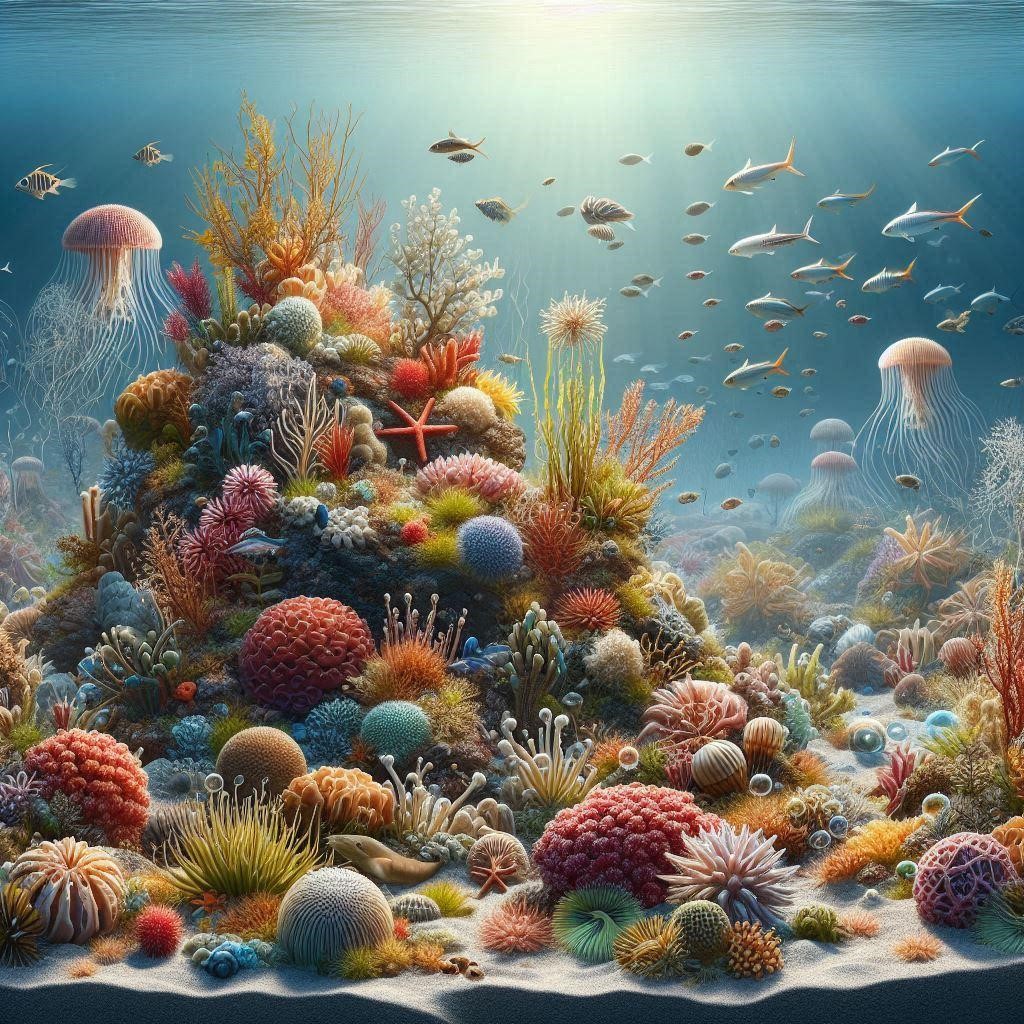Ah, the marine benthos! It’s not the name of a folk singer, but if it were, it would certainly be someone with a deep and mysterious personality, as the marine benthos is the collection of organisms living on the sea floor (and beyond!). And ‘folk’ to the flow of currents and plankton!
Marine benthos and ecological importance
Marine benthos represent a collection of organisms living in close contact with the bottom of aquatic environments, both fresh and salt, in still and running waters. They actively participate in biogeochemical cycles and serve as bio-indicators.
Each benthic habitat type plays a crucial ecological role, providing ecosystem services such as water purification, coastal protection and the sustenance of marine food webs.
The benthic habitat is divided into:
- endofaunal, lives buried or excavated in the sediment, often in the upper oxygenated layer, e.g., a sea pen or sand dollar;
- epifaunal, living on the surface of the substrate, and like corals and algae, are often fixed and depend on light for photosynthesis;
- infaunal, living within the substrate or in the sediment. like many types of worms and crustaceans, they are adapted to low light conditions and often play a key role in the decomposition of organic matter.
This distinction is important because it reflects different ways of interacting with the marine environment and different survival strategies.
Benthic biodiversity
The sandy seabed provides a habitat for many species of fish and invertebrates that are adapted to living in these fine-grained conditions, where the substrate can change rapidly.
The muddy seabed is rich in nutrients and supports a wide range of microbial life, which in turn provides food for other, larger species.
Rocky surfaces provide anchorage points for many sessile species such as corals and molluscs, and coral reefs are known for their extraordinary diversity of life, serving as habitats for thousands of marine species.
Each benthic habitat type plays a vital ecological role, such as purifying water, supporting food chains and protecting against storms.
These organisms are essential in the nutrient cycle, decomposing organic matter and transforming it into simpler forms usable by other organisms.
Their activity as detritivores and decomposers helps to maintain low levels of nutrients such as nitrates and phosphates, preventing eutrophication.
Benthos and human activities
Overfishing,pollution and climate change have devastating effects on these ecosystems, leading to their destruction and reduced biodiversity.
These activities alter environmental conditions, such as the chemical composition of the water and the availability of oxygen, damaging life on the seabed.
Studies show how human activities can disturb not only local ecosystems but also influence global processes.
For example, in the North Sea, it has been observed that human activities can disrupt the natural relationships between benthic reef habitats and other environmental factors.
This suggests that local impacts can have consequences far beyond their immediate boundaries, underlining the importance of a broader understanding and careful management.
Ecosystem-based management and marine spatial planning emerge as key tools to address these challenges. Only through an integrated and collaborative approach can the richness and diversity of marine life be preserved.
Play for the planet!

